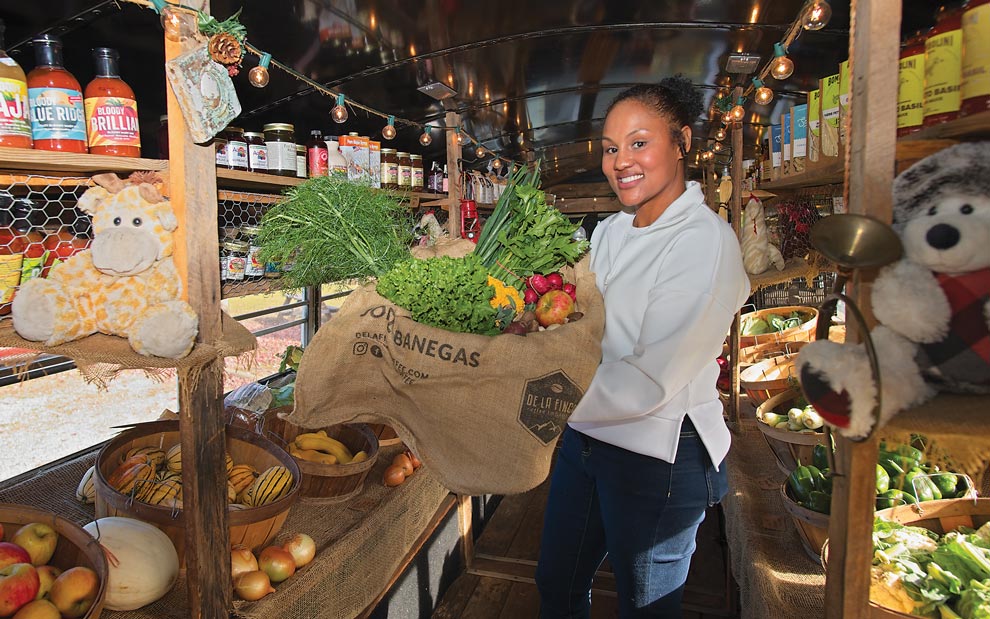I grew up in a rural town outside Nashville with the luxury of having fresh produce – squash, cabbage, turnip greens, collard greens, zucchini, tomatoes, and cucumbers – right in my backyard. With childhood memories of home-grown vegetables at the center of our family’s dinner table, we have tried to cultivate some of those same health-focused eating habits with our children. As a mom of three – ages ten, sixteen, and nineteen – I know the challenges are real. When we moved to Richmond, we began to navigate the local restaurants and spend time at home cooking and eating. Here are strategies for you to try with your family:
1. Make menu selection fun.
Whether you are eating at home or dining out, include your kids in selecting their meal as much as possible. For meal prep at home, I create a quick menu where my kids can choose food that they would like to eat for the week. Modeled after something I found on the U.S. Department of Agriculture website, each meal sheet has a list of options in the following categories: fruit, vegetable, grain, protein, and dairy or dairy-free options. Having options for kids to circle creates the buy-in you need to win them over in this process. With options in place, they are more likely to try things and feel included in the process. To take things a step further at home, have your kids help with washing and preparing the vegetables for the meal. If dining out, talk about where the vegetables come from and how they are being prepared before the food arrives.
2. Pick colors of the rainbow.
Strive to embrace color on the plate! Have kids choose colors of the rainbow and find a vegetable to add to their plate each meal. For younger kids, you can make a spin wheel they can randomly spin and pick a color. This makes shopping for the vegetables to add to their plate more engaging and fun.
3. Check out local farms, farmers’ markets, or a pop-up veggie market with your kids.
This past spring, our youngest child took a field trip to Shalom Farms with his fourth-grade class and came home raving about the taste of fresh carrots picked at the farm. There is something to be said about the experience of farm to table. If you can make it a family event over the weekend, you can try vegetables, enjoy a walk, and incorporate games in the process. Can’t make it to a farm? Don’t fret! There are lots of farmers’ markets in the region.
A few months ago, we checked out the FarmBus with the kids. This year-round CSA (community-supported agriculture) serves DC and RVA with fresh produce from local growers.
It’s also fun to explore your local grocery store’s produce section and look for new vegetables.
4. Offer new vegetables or try familiar vegetables in a new way.
Toddlers and younger kids may be reluctant to try new foods. To help with this, make it a game where everyone in the family tastes a new vegetable of the month together. Create a grid or rating sheet to gauge everyone’s thoughts on the vegetable’s texture, scent, taste, appearance, and other observations.
Try not to let kids get away with the statement: “I don’t like it.” Help them think about why they do or don’t care for a particular vegetable. This makes the process a learning experience. Discuss your results and share ideas about how to help the vegetable taste better. You might say, What would it taste like if we steamed, roasted, or sautéed the vegetable instead? How about if we added different spices? The options are endless.
For familiar vegetables, try them in a new way. Have your kids tried pickled green beans, carrots, or beets? They might be in for a pleasant surprise.
5. Make snacking healthy and fun.
Kids always need a snack. Whether they just had breakfast, lunch, or dinner, my kids routinely say, “Mom, I’m still hungry!” Finding new vegetable-based snacks that kids are excited about can be challenging. Spend more time with those clever recipes and try making ants on a log (celery with peanut butter and raisins) or cucumber bites dipped in hummus. There are lots of ways to make snacking healthy and fun. It can be even better when the kids are making their snacks!
6. Be patient with yourself and your kids!
All kids are different! Some will gravitate toward these ideas and be open to the process of trying new things and others may resist. Don’t worry. Keep trying and be patient with the process. Change does not happen overnight. Keep slowly incorporating vegetables into your meal plan and lay a foundation for good nutrition choices now.
With a little creativity and patience, the sound of your child saying, More veggies, please! can become a normal phrase within your household.





